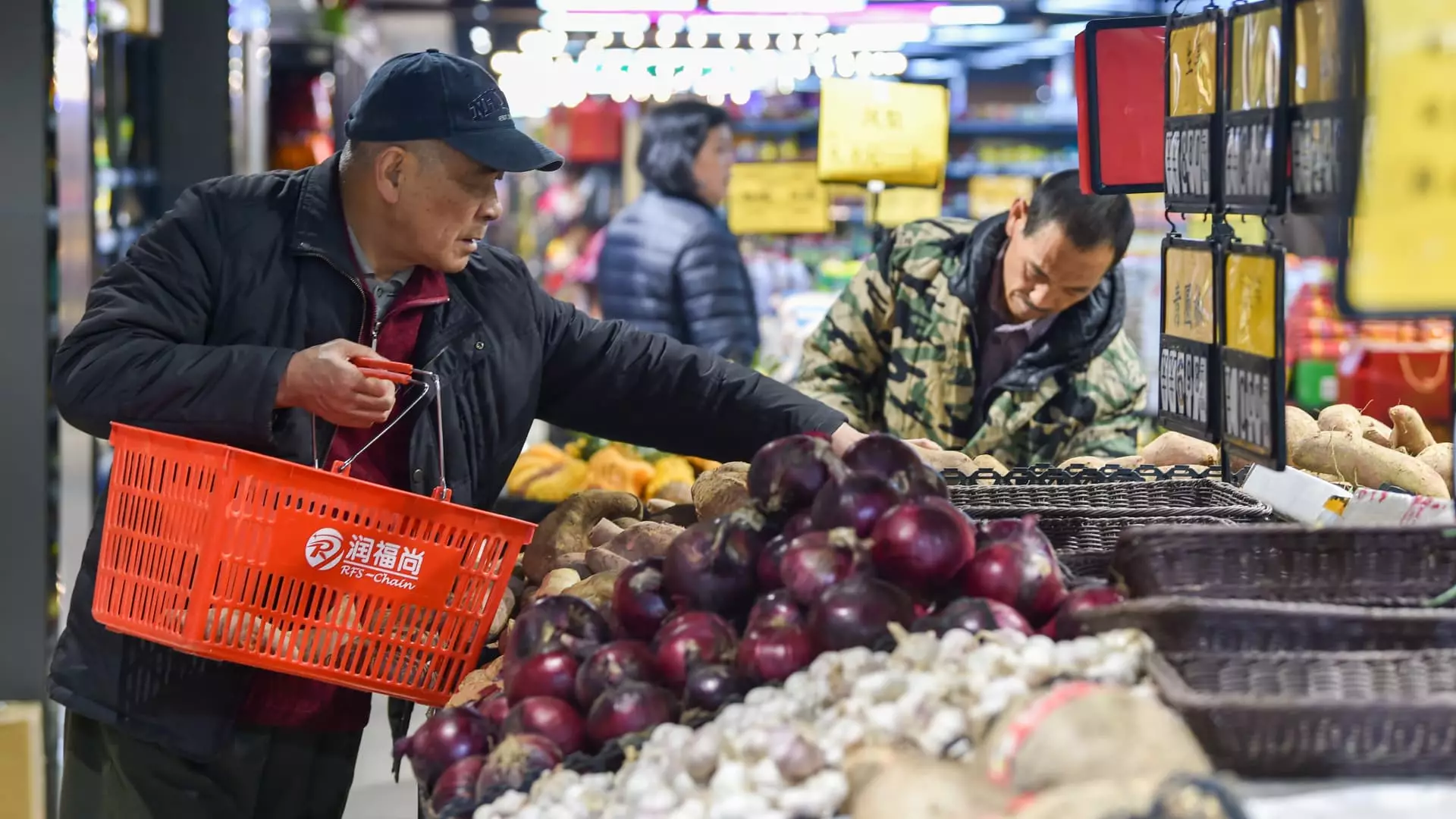In April, China witnessed a third consecutive month of rising consumer prices, signaling a positive shift in domestic demand as the government continues to navigate economic challenges. Data from the National Bureau of Statistics revealed that consumer prices increased by 0.3% year on year, surpassing both March’s 0.1% rise and a Reuters poll forecast of 0.2%. This uptick in prices has been attributed to a resurgence in demand, particularly in the services sector, as highlighted by Xu Tianchen, a senior economist at the Economist Intelligence Unit. Core inflation, excluding volatile food and fuel prices, also saw growth, expanding by 0.7% in April compared to 0.6% in March. Overall, the consumer price index (CPI) rose by 0.1% from the previous month, defying expectations of a 0.1% decline and reversing March’s 1% drop.
While the recent increase in consumer prices may indicate a strengthening demand for goods and services, a closer look reveals that Beijing still faces significant hurdles in its efforts to stabilize the economy. Ongoing reports of cooling factory and services activity, coupled with a persistent housing crisis, suggest that the momentum gained from policy support measures may not be sustainable in the long run. As Xu pointed out, price hikes by utility companies and fiscal strains on local governments could further strain households and hinder lasting economic recovery. The looming municipal debt of $13 trillion adds to the complexity of the situation, prompting the State Council to intervene by postponing or halting state-funded projects in heavily indebted regions.
Implications of Producer Prices Decline
In contrast to rising consumer prices, China’s producer price index experienced a continued decline, dropping by 2.5% year on year in April. While this decline was less severe than the previous month’s 2.8% slide, it extends a prolonged period of negative growth in the industrial sector. The central bank’s commitment to flexible and effective monetary policy aims to reverse this trend and stimulate a moderate recovery in consumer prices. The prospect of addressing necessary structural adjustments in manufacturing and industrial sectors to reestablish balance in domestic demand remains a critical priority for policymakers.
Looking ahead, the Chinese government faces the challenge of achieving a growth target of approximately 5% in 2024 without substantial policy support. As observed by Bruce Pang, chief economist China at Jones Lang LaSalle, effective demand continues to be a concern, necessitating stronger expectation management and the creation of more consumption scenarios to sustain growth. The Politburo’s commitment to leveraging policy tools such as banks’ reserve requirement ratio and interest rates underscores the importance of targeted interventions to bolster the economy. While recent improvements in consumer prices offer a glimpse of hope for a nascent recovery, the road ahead demands a delicate balance of fiscal measures and structural reforms to secure long-term stability and sustainable growth.


Leave a Reply